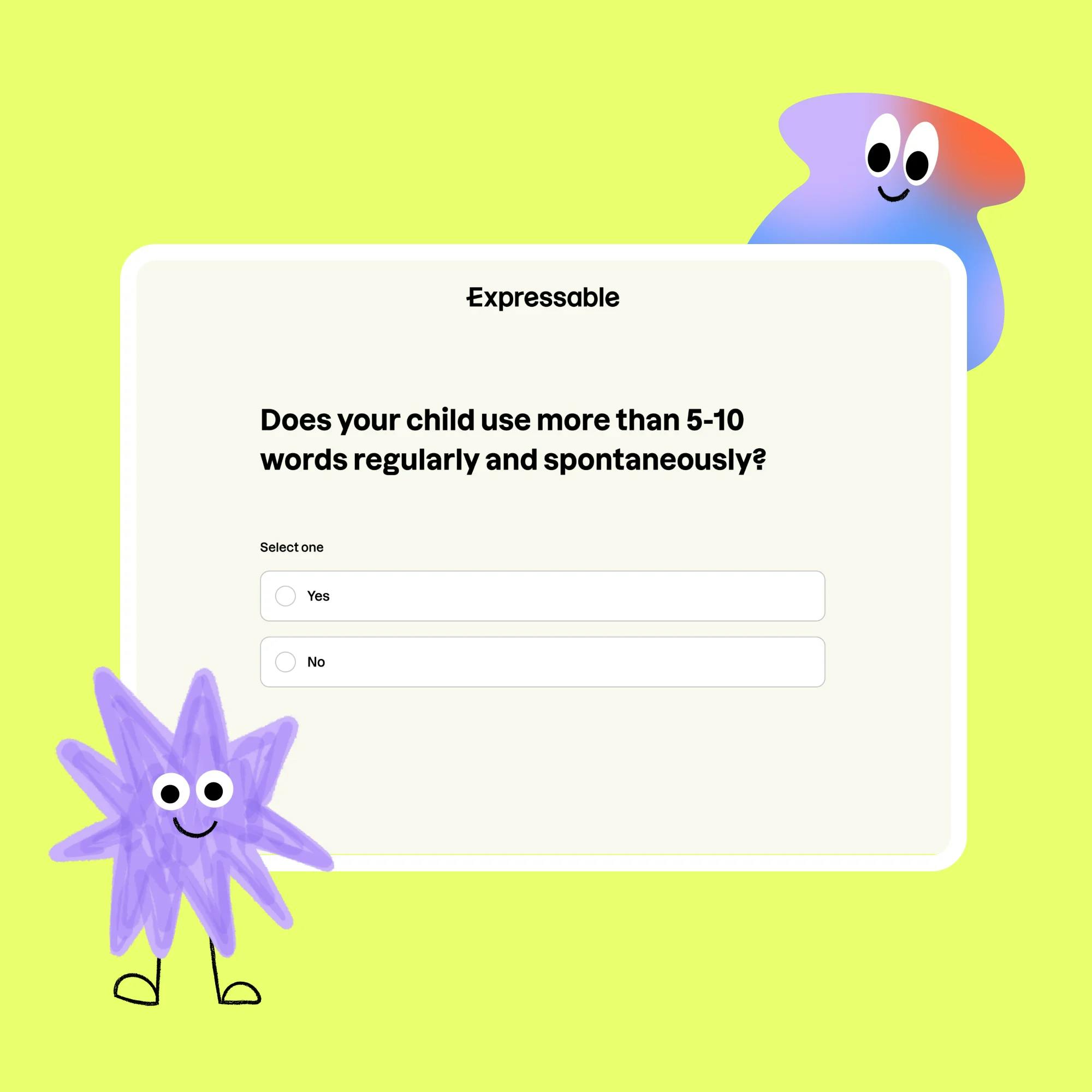We’ve probably all heard the term “picky eater.” And if you’re a parent or caregiver, you may have one or two of them in your home! That’s because picky eating is a fairly common occurrence in young children.
If you have a child who doesn’t like to try new foods, read on for 7 tips from feeding therapy experts that can help make mealtime happier–for everyone.
Expert feeding support for kids
Feeding therapy helps make mealtimes safer and more positive. Our feeding program supports your family from the comfort of your home.
 Get started
Get startedWhat is a picky eater?
First, the basics. How do you know if your child is a picky eater? A picky eater eats a limited variety of foods, and they resist trying new foods. For example, a picky eater might eat the same food over and over and refuse to eat any other foods.
Is it normal for kids to be picky eaters? Research has shown that picky eating can occur in up to 59% of children. Picky eating is often considered “developmentally appropriate.” It’s something many children experience between the ages of 2 and 4 years.
However, if a child eats fewer than 20 foods, they are considered to be “hyperselective.” Typically developing children often become hyperselective around 5 to 7 years old. A hyperselective diet is what you may think of as a “child’s diet”–chicken nuggets, french fries, buttered pasta, and other foods found on a kids’ menu.
You can learn much more about picky eating, what causes it, and when feeding therapy might be helpful in this article.


7 ways to encourage your child to try new foods
Here are some ways you can support your picky eater and encourage them to try a wider variety of foods.
1 Offer preferred foods every other day, instead of every day
We all have our preferred foods. Maybe yours is popcorn or a piece of chocolate after the kids go to bed. Maybe your child’s favorite food is macaroni and cheese, and they ask for it at every meal. You might be tempted to give in–sometimes, it’s all we can do to get our kids to eat and move on with the day’s routines.
But it’s important to know that just like adults, kids can experience burnout. If they eat the same thing every day for a long time, they might eventually stop eating that food, which can limit their diet even more. A quick change you can make right away is offering your child’s preferred food(s) every other day, rather than every day.
If kids eat the same food every day for a long time, they might eventually stop eating it, limiting their diet even more.
You can also get creative in the ways you present the food to make it new and exciting again. For example, say your child has eaten apple slices for breakfast every morning, but now they refuse to even look at an apple. You can offer them apple slices with cinnamon on top, or cut the slices in a new way (hint: “apple fries,” anyone?). More about this in the next tip!


2 Make small changes to preferred foods
Making small changes to your child’s favorite foods can help them practice trying “new” things and avoid burnout. When we say “small changes,” think changes to the shape, color, taste, texture, and presentation. There are many ways to do this, and you can definitely get creative, but here are some ideas:
Shape: Use cookie cutters to cut chicken nuggets into shapes.
Color: Add food coloring to turn mac & cheese blue.
Taste: Dip a chicken nugget in sauce or add different seasonings/spices to mac & cheese.
Texture: Change the way the food is cooked, like baking a chicken nugget instead of frying it.
Presentation: Blend a banana into a fruit smoothie. Now it’s a drinkable liquid! Or turn the blended fruit smoothie into popsicles.
Pro tip: When making these small changes, stick with the change for at least one or two weeks before making another change!


3 Create a positive environment
Creating a food-positive environment isn’t always easy. Many of us grew up being told we had to “clean our plate” before leaving the dinner table. While our families meant well, many times, this backfired.
So, what can you do instead? Trust and encourage your child to listen to their body and their hunger cues. Use positive language that reinforces and models this for them. Here are some examples:
“If your tummy is feeling full right now, you can take a break. I’ll leave your food here for whenever you’re hungry again.”
“I’m so proud of you for listening to your body. You can let me know when you’re hungry.”
When offering our children new or non-preferred foods, we want to use positive, calm, and supportive language to reduce the pressure to try the food. This may be a huge shift in mindset for you, but give it a try! Our expectations and the language we use can change. Here are some more examples:
Instead of this: “Try it, you’ll like it!”
Try this: “You don’t have to eat it, but you do have to learn about it.” (See #5 below for ways to help your child learn about new foods.)
Quick demo: Try this with your picky eater
Watch here4 Serve new foods in small portions
It can be extremely helpful to present new or non-preferred foods in very small portions. This can help your child avoid having a “fight or flight” response, such as running away, hiding, panicking, or shutting down.
When serving small portions, to encourage your child to try the food, try getting creative in your presentation! Here are some ideas:
Place one blueberry on a toothpick.
Serve the new or non-preferred food in an ice cube tray.
Use fun spoons or other utensils.
Find a cool plate or bowl to serve it in.


5 Encourage your child to explore food
Encourage your child to learn about the food(s) in new ways. “Learning” about food includes anything that creates a positive interaction and experience for your child. Here are some ideas:
Talk about the food: What does it look like? What does it do for our bodies?
Smell the food: What does it smell like?
Touch the food: What does it feel like?
Poke the food
Touch the food to your teeth or tongue
Take a bite and spit it out
When learning about food, be sure to use descriptive, child-friendly language. This gives the extra bonus of supporting your child’s language development. And remember, we want to work up to your child taking a bite of the food without increasing their fear around it. So, your child doesn’t have to do all or any of these ideas; giving them choices is the key. For example, you can ask, “Should we learn about broccoli or asparagus today?” or “Do you want to smell it or poke it?” When you offer choices, you give your child that sense of power and independence that they crave.
Pro tip: Play a game of “Simon Says” to make learning about the food even more fun. “Simon Says…bounce the carrot on your nose!” This is sure to get a giggle or two.


6 Offer a “learning plate” or an “all-done bowl”
Have you ever been served a meal with food you just can't stand? When this happens, we typically want to remove the food from our plate as quickly as possible. The same thing happens when a child is presented with a new or non-preferred food–“Ahhhh, get it off my plate!”
Try giving your child a spot to place these foods. The benefit is that you’re exposing your child to new foods, but in a much less stressful way. What you call the spot is totally up to you and what works for your family! This is a place where your child can move food (and not eat it) with the expectation that they still have to learn about it.
The benefit is that you’re exposing your child to new foods, but in a much less stressful way.
Pro tip: This is an excellent trick because touching and moving the food to another plate or bowl can be part of the learning process. You can get creative in how your child moves the food–they can blow it, roll it, or even bounce it over to the learning plate!


7 Get your child involved in meals
Involving your child in the entire process of planning meals, shopping, and cooking can make them more open to actually trying the food. Here are some ideas you can use for your next trip to the grocery store. Although these may seem simple, they are powerful techniques that can benefit your child.
Give your child choices. While creating a shopping list, ask your child questions such as “Do you want to try apples or bananas?”
Take your child shopping. Let them pick out a new food to try!
Cook together. Involve your child in the meal prep process by giving them age-appropriate tasks.
Set the table. Have your child decide which plates and utensils to use for mealtime and have them set the table accordingly.
Serve the food. Encourage your child to serve the food they prepared.


What if my child still refuses to try new foods?
Here’s a (not so) fun fact: Children have to try a new food 8 to 15 times before they can decide if they like it and want to accept it as part of their regular diet. Don’t give up! It’s essential to expose your child to new foods regularly. So, try again…and again. You can wait a couple days in between each time.
Children have to try a new food 8 to 15 times before they can decide if they like it.
If there’s one thing you take away from this article, know this: It's your job to offer healthy meals and snacks consistently. It’s your child’s job to decide what to eat and when to eat it. Try using some or all of the tips mentioned above, and see what works for your child!
Keep in mind that some children have sensory feeding issues that can be treated by a speech-language pathologist, or speech therapist, who specializes in the clinical area of feeding. The therapist can help the child decrease their negative responses to certain foods.
Feeding therapy is extremely individualized, so reach out to a speech therapist if you’re concerned about your “picky eater.” Through an evaluation, the speech therapist can determine if therapy would help your child expand their diet.
How Expressable Can Help
Concerned your child isn't reaching age-expected milestones? Looking for communication support from a professional? Expressable is a national online speech therapy practice serving children and adults. We treat all major areas of communication and feeding, offer flexible hours including evenings and weekends, and accept most major health insurance plans. We’re proud to have earned more than 3,000 5-star reviews from our clients (4.9/5 average).
Our therapy model is centered on parent and caregiver involvement. Research proves that empowering caregivers to participate in their loved one’s therapy leads to better outcomes. That’s why we combine live, 1-on-1 speech therapy with personalized education and home practice activities for faster progress.
Communication is more than words. It’s how we share how we feel and show who we are. We’re here to help you or your child do just that.

 Alexis Irazoque, M.S., CCC-SLP
Alexis Irazoque, M.S., CCC-SLP







